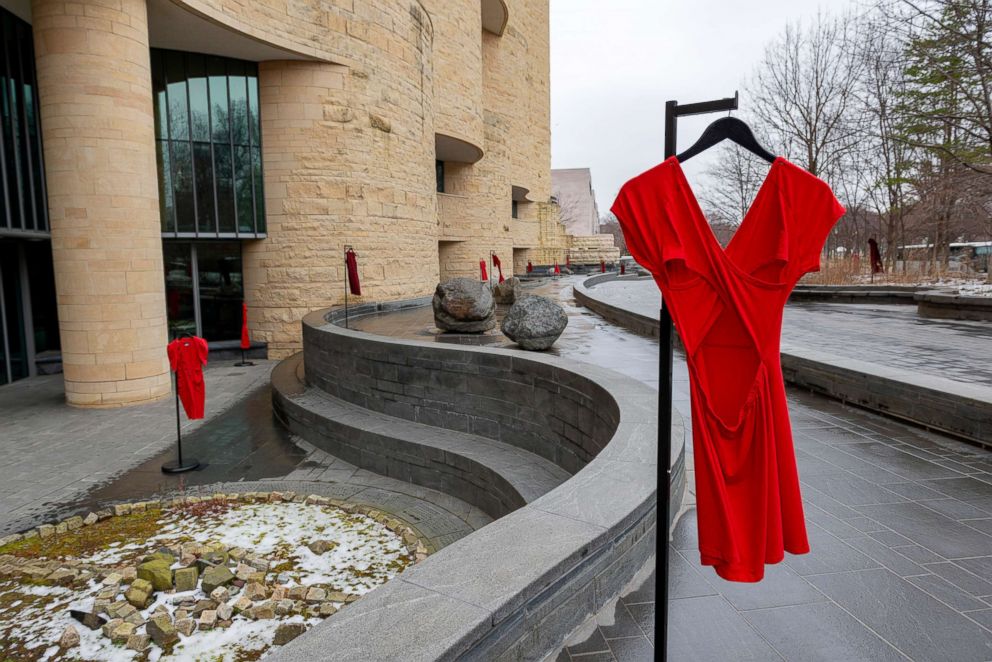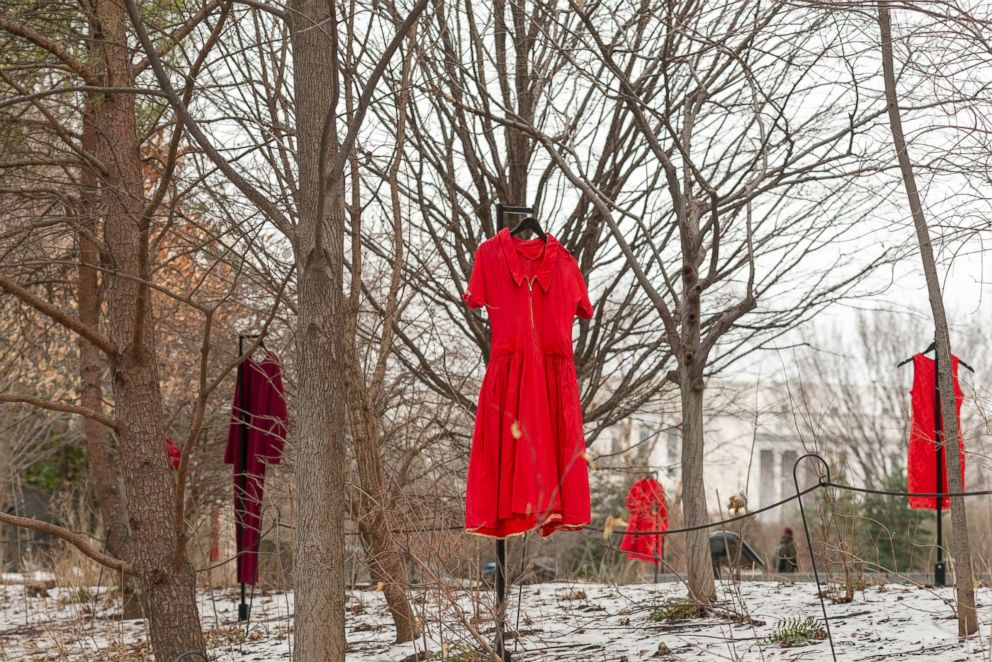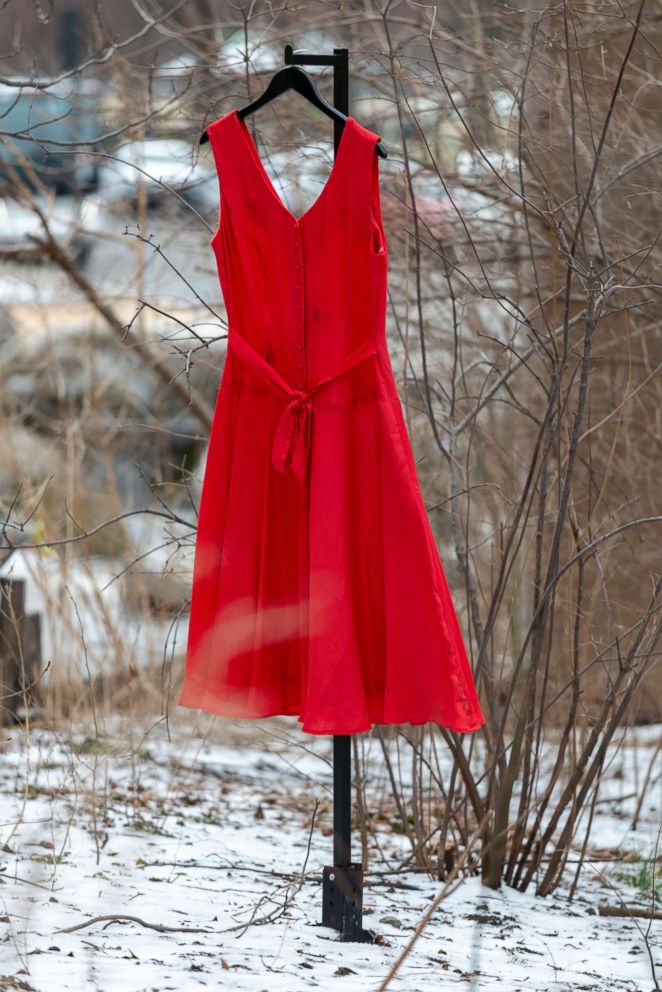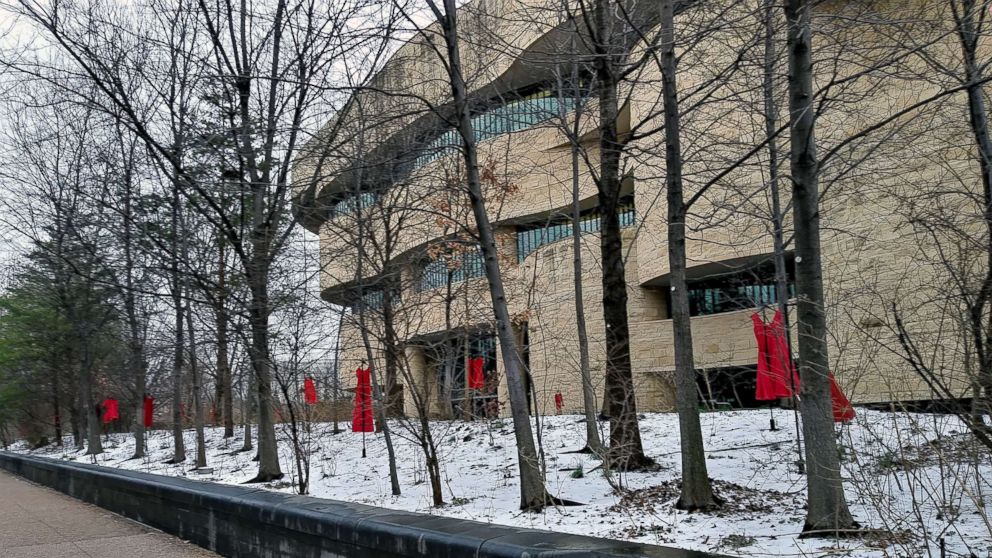A matter of 'life and blood': REDress Project seeks to highlight violence against Native American women
"Violence will not silence Indigenous women," said artist Jaime Black.
The red dresses hang from barren branches and flutter in the chilly spring air.
One looks like it's meant to be worn to the office. Another resembles a "date night" dress. Yet another could be worn for a casual day out.
The dresses are part of an outdoor installation by artist Jaime Black and are aimed at drawing attention to the ongoing issue of violence against Native American women. The stark silhouettes flanking the Riverwalk located in the National Museum of the American Indian’s Native Landscape area commemorate Women’s History Month.

Originating in Canada, this is the first time the exhibit has been in the United States. Black attempts to create dialogue around social and political events and issues, through provocation and creating space for reflection.
"Since the onset of colonization, Indigenous women have been standing up to protect and defend the lands, waters, and communities," Black said in a statement. "It is because of this stand that Indigenous women and girls have been the target of colonial violence for centuries."

Since 2011, the dresses which were collected through community donations, have symbolized the indigenous female body as a target of violence. This violence includes kidnapping, murder, and sex trafficking.
Over 600 dresses have been collected to represent a missing loved one.
Black chose red for her exhibit because it is a powerful color of indigenous communities.
"It is the color of life and blood," she said in a statement. "It is a very sacred color that represents the violence that these women are facing, and it connects all of us together."
It is so easy to picture a woman wearing the red dresses and that is exactly Black's point. She wants people to know that it is not a fashion showroom.
Violence against Native American women is a topic lawmakers on the Hill have grappled with over the years as members of those communities have pressed members of Congress for help on the issue.
University of Kansas Professor Sarah Deer, a citizen of the Muscogee Nation of Oklahoma who has been working for two decades on the issue of violence against Native American women, testified recently to Congress that the disappearances date back to 1492 when Europeans kidnapped native people and sent them to Europe.

According to Deer, there is currently no formal government-funded national database that tracks the cases of missing Native American women.
Native American women and girls are also targets of violent crime because of a complicated jurisdictional loophole that applies to Indian country. Anytime a Native American person is taken against their will or a victim of a homicide; tribal officials will be the first to respond, Deer said.
However, tribal criminal jurisdiction is curtailed particularly when the offender is non-Indian. Because tribal nations lack criminal jurisdictions over non-Indians, legal-savvy predators are attracted to Indian lands because there is less likelihood of being caught and prosecuted.
"As a nation, I believe we are better than this." Deer told the House Subcommittee for Indigenous Peoples of the United States in an oversight hearing titled "Unmasking the Hidden Crisis of Murdered and Missing Indigenous Women.

The Sovereign Bodies Institute, a Native American-owned and operated non-profit organization has been working since 2015 to gather as much of the data on missing women as possible. The organization uses open source reporting and input from the missing women's family members. There are currently nearly two thousand names in the database.
"Violence will not silence Indigenous women," says Black. "Through the REDress Project, the spirits of the missing or murdered women and girls stand with us giving us courage, strength, and clarity, leading us forward on the path to reclaiming our sovereignty as Indigenous women."




